“In qualsiasi direzione vai,
vacci con tutto il cuore”
(Confucio)
È andata cosi. Vi dirò la verità, tanto si è capito che vivo un po’ tra le nuvole.
Dunque, è accaduto che passeggiavo immersa nelle strade di Monaco, inseguivo le vie che mi portano al mio grande amore – il teatro – alla ricerca degli odori speciali che solo un teatro vuoto si porta dentro, di palchi silenziosi, di volantini buttati a caso, di gente come me, che ti apre la porta e ti regala ore e sogni teatrali spiegandoteli in tre lingue diverse, che tu capisci tutte, perché poi alla fine il linguaggio è uno solo, drammaturgico, teatrale, roba tua insomma, roba mia insomma. Casa, insomma.
Comunque il punto non è questo – ne parleremo ma non ora.
Il punto è che mentre camminavo e poi mi incantavo, impalata di fronte a un teatro piccolo e a un omone grande e dolce, e poi proseguivo il mio cammino, ecco che a un certo punto mi sono ritrovata in una via che non conoscevo, in un quartiere che non conoscevo, senza un solo appiglio, in una Monaco diversa da quella cui sono abituata. Mi ero persa.
Ora, io mi perdo spesso perché quando cammino viaggio, e di solito mi piace, ma quel giorno avevo altri progetti e invece.. e invece a un certo punto mi ritrovo davanti a un’insegna, mi innamoro all’istante, mi ricordo dell’articolo che Ale ha scritto insieme a Margaret sui bento box (eccolo) e mi viene un’idea.
Un messaggio vocale veloce e confuso ad Alessandra – ché tanto lei capisce al volo anche quello che ancora non ho capito bene io di me – e l’immagine perfetta dell’articolo che sto scrivendo ora. Come una scena teatrale, lì davanti a me.
Mi sono persa in Oriente, ho pensato. A Monaco di Baviera. Wow!
Comincia così questo articolo, e questa piccola escursione che mi ha condotto, passo dopo passo, lungo “le vie della seta a modo mio”.. e se vi va, quando venite a Monaco, ricordatevi di questo post come di una sorta di (pseudo) guida alla ricerca e alla conquista di quel che di orientale si trova “nascosto” nella capitale bavarese. Un piccolo grande mondo, tra vicoli e grandi parchi, larghe vie e paradisi naturali.
Ma andiamo con ordine, Sa’. (Sa’ sono io, tranquilli non parlo da sola, non troppo spesso almeno, piuttosto mi redarguisco, che è tutta un’altra cosa!).
L’insegna di cui parlo è quella di un ristorante, che in realtà è una vera e propria “Casa del Ramen”, giapponese ovviamente. Il suo nome è Takumi. “Ristorante” non è solo un termine riduttivo, ma un modo di negare a questo posto la verità del suo essere, che invece appare magico, lontano, così orientale, così affascinante. A me queste robe mi rapiscono, la sensazione così viva di essere in Baviera eppure anche di non esserci, ché appena entrata in questa Casa ti ritrovi nel cuore di Tokio, e sapori e odori e lingua e persone sono lì a dimostrartelo. Magia.
Il Ramen è un tipico piatto giapponese – alcuni sostengono di origini cinesi, in ogni caso – una sorta di brodo a base di tagliatelle cinesi, soia, cipolla, salse e sapori che non riconosco. Al Takumi viene servito in ciotole belle capienti, tanto che finire un piatto per me è stata un’impresa che ho fallito! Ci sono diverse varietà di Ramen, si dice che in ogni città giapponese ognuno abbia la sua ricetta speciale. Qui nel menù ce ne sono davvero tante, a base di carne di maiale, vitello, oppure pesce di ogni tipo, o verdure, sono squisite da mangiare e belle da vedere.
Ma l’Oriente al Takumi non è solo nel cibo: è nei clienti, nel loro modo di sedere a tavola, nei cuochi giapponesi che preparano piatti in una cucina a vista, negli arredi dal sapore nipponico, minimalisti ma con quel tocco tutto loro, riconoscibile al primo sguardo.
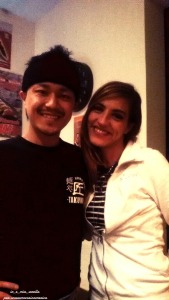 E’ nel proprietario, Yoshihiko Yuki, che io ho imparato a chiamare solo Yoshi. Un ragazzo gentile, che parla non so quante lingue, che mi ha aiutata a scegliere il Ramen perfetto per me – essendo convinto che c’è un Ramen in ognuno di noi – che sorride sempre e calmo e gentile serve i suoi clienti, che ti fa sentire a casa nella sua casa. Yoshi, il mio giapponese a Monaco di Baviera. Grazie dell’ospitalità. Grazie di avermi fatto volare fino in Giappone, a Heßstraße 71, Monaco, Germania.
E’ nel proprietario, Yoshihiko Yuki, che io ho imparato a chiamare solo Yoshi. Un ragazzo gentile, che parla non so quante lingue, che mi ha aiutata a scegliere il Ramen perfetto per me – essendo convinto che c’è un Ramen in ognuno di noi – che sorride sempre e calmo e gentile serve i suoi clienti, che ti fa sentire a casa nella sua casa. Yoshi, il mio giapponese a Monaco di Baviera. Grazie dell’ospitalità. Grazie di avermi fatto volare fino in Giappone, a Heßstraße 71, Monaco, Germania.
Capirete dunque che ormai ero totalmente andata. Persa non solo fisicamente, ma in un mondo tutto mio in cui vedevo, abbaglianti, luci d’Oriente e scritte incomprensibili. A un certo punto mi sembrava di camminare accanto a Mila Atzuki, e ne avevo anche paura.. è altissima e solo i suoi occhi sono quasi tutto il mio viso (e il mio viso è lungo, ve lo garantisco!).
Da lì è stato tutto uno svoltare a destra, poi ancora a destra, poi dritto per un po’, e infine a sinistra. Ed ero in Leopoldstrasse. Una via lunghissima, molto trafficata, piena di locali, ristoranti, gelaterie, negozi, un teatro, artisti di strada, etc. Una roba pazzesca, che però già conoscevo.
Ma sarà che quel giorno era così particolare, sarà che Mila era con me, non lo so, ma a un certo punto ecco che mi ritrovo dinnanzi al numero 42, il civico del Bento Box japanese cooking. Voi cosa avreste fatto?
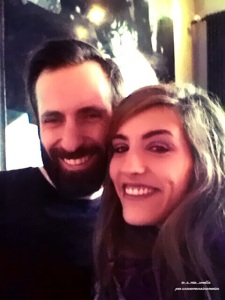 Il locale è molto carino, c’è un’aria giovanile e piuttosto easy, che a me è piaciuta subito. E’ su due piani, e al bar ci lavora un ragazzo tedesco, gentilissimo, che mi ha permesso di scattare quanto volevo quando gli ho spiegato che ero “un’italiana che voleva scrivere un articolo per un blog italo americano sull’Oriente in Germania”. Ha sorriso, lui, e ha detto “Wilkommen!”.
Il locale è molto carino, c’è un’aria giovanile e piuttosto easy, che a me è piaciuta subito. E’ su due piani, e al bar ci lavora un ragazzo tedesco, gentilissimo, che mi ha permesso di scattare quanto volevo quando gli ho spiegato che ero “un’italiana che voleva scrivere un articolo per un blog italo americano sull’Oriente in Germania”. Ha sorriso, lui, e ha detto “Wilkommen!”.
I cuochi che preparano le pietanze, consumate nei bento box appunto, sono tutti orientali, così come la maggior parte dei clienti, e tutto è calma, quiete e buon odore. Sono rimasta a fissare i piatti, gli arredi, la gente, per cercare di imprimermi bene la sensazione che mi ha dato star lì, per poi raccontarvela. Lo faccio con tre parole.
Il posto giusto.
Questo è davvero il posto giusto se si ci vuole sentire “lontani” da casa, con addosso la sensazione che se si guarda fuori si vedranno salici piangenti e ciliegi in fiore anziché una delle strade più praticate di Monaco. Ah, i bento box si possono prendere anche a portar via, son carinissimi e il cibo è divertente, fresco e buono. Davvero!
Poi vi dico la verità, non è che ho proprio barato, però a quel punto è stato facile. Sapevo dove dovevo andare per continuare la mia ricerca. Una delle nostre due traduttrici del cuore, che non ringraziamo mai abbastanza, mi avrebbe suggerito subito la nuova destinazione, ché anche lei come me ne è innamorata.. Daniela, mi sono diretta proprio lì, all’ Englischer Garten! E wow (per la seconda volta in un giorno)! Uno dei parchi più grandi d’Europa, più grande di Central Park a New York, un luogo ogni volta diverso, per me, a seconda dell’umore o degli occhi con cui lo guardo.
Quel giorno, vi assicuro, tutto parlava di questa Monaco d’Oriente, mix strambo e insieme improbabile e armonioso.
Non ho camminato poi molto, la mia fermata non era lontana. Però era bellissima.
La Chinesischer Turm, o Torre Cinese, è una costruzione che risale alla fine del 1700, eretta grazie a Johann Baptist Lechner e disegnata da Joseph Frey. E’ stata ricostruita più volte, dopo aver subìto vari incendi, l’ultimo dei quali verificatosi durante la Seconda Guerra Mondiale.
E’ alta circa 25 metri, tutta in legno, 5 piani uniti da una scala a chiocciola, ed è un esempio perfetto di pagoda cinese. Dal tetto di ogni piano scendono campane dorate, e se la si vede col sole fa un effetto meraviglioso. Tutto intorno si estende un biergarten (letteralmente giardino della birra, un’altra di quelle cose di cui prometto di scrivere, altrimenti che razza di romana in Germania sarei!!) : 7000 posti a sedere, mica uno!
Mi aggiravo intorno alla torre scattando come una pazza, quando mi sono sorpresa a guardare chi avevo intorno. Erano le 15.00, c’era il sole e una calma appagante. Era bellissimo star lì, non me ne sarei voluta andare mai.
Qui, più che in tutti gli altri luoghi orientali del mio viaggio, l’atmosfera è un misto di razze, abitudini, cibo, lingue. Ci trovi mamme col passeggino che prendono il sole mentre i bambini giocano sulle scale della Turm, giovani tedeschi seduti a bere birra e a farsi selfie, cinesi, indonesiani, giapponesi e non lo so a mangiare e leggere libri nella loro “lingua disegnata”, come la chiamo io.
C’erano, quel giorno, dei signori che ho adorato fin da subito, che giocavano a carte nella semplicità di chi può trovarsi in un’osteria romana, e non nella terra del Dragone nel cuore di Minga (che in dialetto bavarese è sempre Monaco). Che volete che vi dica, io mi innamoro di uomini così!
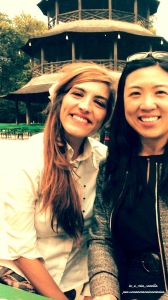 E di visi come questo, di una ragazza che non conosco e che non ho più visto, e che gentile ha posato con me mentre mi raccontava quanto le piacesse, ogni tanto, sedersi sotto la torre a immaginarsi casa. Casa.
E di visi come questo, di una ragazza che non conosco e che non ho più visto, e che gentile ha posato con me mentre mi raccontava quanto le piacesse, ogni tanto, sedersi sotto la torre a immaginarsi casa. Casa.
A malincuore ho lasciato quel pezzetto di Cina, ma prima che iniziassi a rimpiangerlo ho trovato la strada di una nuova meta, che non è un “posto” vero e proprio. E’ natura. Che non solo ti circonda, ma ti seduce lentamente e con quel filo di maestria proprio solo di chi sa di essere così sublime. Ho camminato, allora, perdendomi il tempo, rivedendo con la mente tutto ciò che so dell’Oriente lontano – che non è poi molto – e della sua gente, gli occhi a cercare di catturare quanto più possibile, e l’antico vizio (tutto teatrale) di formare immagini che rimandano ad azioni, sensazioni, emozioni. Io non lo so se chi mi ha visto, quel giorno, ha pensato che fossi un po’ matta – il che è probabile e ormai non mi sorprende più di tanto – ma alla fine posso dire “Chi se ne frega”? Chi se ne frega. Neanche li ho sentiti, ero troppo lontana!
Gli alberi gentili e un po’ tristi, il rumore lento ma inesorabile dell’acqua, quelle foglie e quel verde così intenso, e il sole a giocare su tutto: credete a me, era fin troppo semplice seguire l’idea che avevo avuto al mattino.
E poi, quello. Io lo sapevo che c’era, lo avevo già letto da qualche parte, ma non ho dovuto nemmeno cercarla, ché la natura e i miei passi mi avevano già suggerito il cammino. Mi è bastato solo strizzare gli occhi ed eccola là. Nascosta, all’inizio, da un ciliegio di un rosso abbagliante e da alberi e tronchi e acqua. Circondata dal silenzio, se ne sta riparata, in un angolo dell’Englischer Garten, la Japanisches Teehaus, la casa del tè giapponese.
E’ un luogo incantato, adagiato su una specie di isola dove riposa insieme al suo giardino, costruito in occasione delle Olimpiadi del 1972. Ho letto che fu un regalo alla Baviera fatto dal signor Soshitsu Sen, Maestro della scuola del tè Urasenke di Kyoto. E’ una costruzione in legno, molto regolare, e c’è da dire che gli orari di apertura sono piuttosto limitati: al momento apre un solo fine settimana al mese e ad Ottobre si potrà consumare una tazza del loro speciale tè Sabato 10 e Domenica 11.. io non mancherò, ovviamente!
In ogni caso, la terza domenica di Luglio si celebra all’interno della Teehaus una speciale cerimonia tradizionale per la consumazione del tè, che in Giappone è cultura, gesto tramandato, esperienza. Una giornata un po’ più speciale delle altre, credo. Prometto, se ci vado, torno con le foto e l’articolo già in testa!
Ho girato e rigirato intorno alla Casa, ho attraversato il piccolo ponticello fino all’entrata, ho scattato, ho toccato le porte, il cancello in legno, la pietra proprio davanti col nome inciso sopra. E poi ho ascoltato la musica di quel posto tremendo, ma tremendo immaginatelo nella sua accezione positiva, tremendamente quello che stavo cercando, la giusta fine di quell’idea che avevo avuto, il termine del mio viaggio in Oriente, la fine lieta e gentile di una giornata iniziata in un modo e arrivata fin lì, nel cuore di Kyoto, nella parte sud dell’Englischer Garten di Monaco di Baviera, Germania.
Io non lo so se son bastate le mie parole o le immagini che ho scattato, non lo so se un articolo e un’idea e un piccolo viaggio possano davvero essere sufficienti per tutti voi. Se lo sono stati, ne sono felice. In caso contrario, sono ancor più entusiasta e vi dico venite, ripercorrete le strade, perdetevi un po’.
Ne vale sempre, sempre la pena.
Ci si vede presto, grazie per la pazienza con cui leggete i miei lunghi articoli.. e tranquilli, la strada di casa, alla fine, l’ho ritrovata (più o meno..)
Sabrina
“Wherever you go,
go with all your heart”
(Confucius)
It went like this. I will tell you the truth, it is understood that I live a bit in the clouds.
Well, it happened that I was walking absorbed in the streets of Munich, I was following the streets that would bring me to my great love – the theater – searching for the special smell that only an empty theater carries inside, of silent stages, of randomly scattered flyers, of people like me, who just open the door and give you hours and dreams made of theater and in three different languages, but you understand them all, because at the end the language is only one, the language of drama and theater, that speaks about you, about me. In other words home.
Anyway this is not the point. We will talk about this but not now.
The point is that as I was walking and wondering at anything, now standing still in front of a small theater and a big and sweet man, and keeping on going my way, it happened that at some point, I found myself in a street I did not know, in a neighborhood that I couldn’t know less, in a different Munich from the one I used to know. I was lost.
You know I always get lost because when I walk I actually travel, and I usually like it, but that day I had other plans, instead… at one point I found myself in front of a sign, I instantly fell in love with it , I recalled the article that Ale wrote together with Margaret about the bento box (here) and I got an idea.
A quick and confused vocal message to Alessandra – ‘cause she understands quickly even what I don’t get well about myself- and the perfect image of the article which I/m writing now. As a theatrical scene, there, in front of me.
I got lost in the East, I thought. In Munich. Wow!
This article starts like this with a short excursion that brought me, step after step, along “the silk roads in my own way” and if you want… when you come to Munich remember this post as of a kind of (pseudo) guide the research and the conquest of what is east of “hidden” in the Bavarian capital. A big little world, through alleys and large parks, wide streets and natural paradises.
But first things first, you know ‘. (Sa ‘I am, I do not speak quietly alone, at least not too often, I warn, rather, that is something else!).
The sign I am talking about belongs to a restaurant, actually a real “House of Ramen”, Japanese of course. Its name is Takumi. “Restaurant” is not just a pejorative term, but a way of denying this place the truth of its being, that seems rather magical, far east, so charming. To me this stuff kidnapped me, I feel so alive to be in Bavaria but also not to be there, because just coming into this house you find yourself in the heart of Tokyo, and tastes and smells and language and people are there to prove it. Magic.
The Ramen is a typical japanese dish – someone says it has chinese origins – and it’s some sort of soup with chinese noodles, soy, onion, sauce and other flavours difficult to recognize. At Takumi’s Ramen is served in big bowls, so big that it was hard for me to finish a dish! There are different varieties of Ramen and it’s said that in every japanese city everyone has a special recipe. Here in the menu, there are a lot of recipes, with pork or beef, or with fish or vegetables, and they are both beautiful and delicious. At Takumi’s the East is everywhere, not only in the food. You can find the East in customers, in the way they sit, in japanese chefs, who cook surrounded by Nipponese furniture, and you can see them while they are cooking. They are minimalist and unique in the way they do things.
The East is in the owner, Yoshihiko Yuki, the one I simply call Yoshi. He is a very kind boy, he is polyglot but I don’t know how many languages he speaks, and he helped me in choosing the perfect Ramen for me – he is convinced there’s a Ramen in all of us. He is a very happy person, he is always smiling, he’s calm and kind when serving his customers, and he makes you feel comfortable, as if you were at home…in his home! Yoshi, my Japanese friend in Munich! Thank you for your hospitality. Thank you for bringing me to Japan while I was sitting in Hessstrasse 71, Munich, Germany.
You can see I was really out of mind. I felt lost not only physically speaking… I felt as I lived in a private and intimate world where I saw blinding Eastern lights and written signs I didn’t understand. Sometimes I got the impression that I was walking next to Mila Atzuki, and I felt scared… She is very tall and her eyes are as big as my face (and my face is long and big!).
From there I turned right, then right again, then I went straight on and then I turned left again. And I found myself in Leopoldstrasse. A very long street, very busy, full of clubs and restaurants, ice-cream parlors, shops, theaters, and street artists etc. A great place, I already knew it.
But that day was a special one, maybe because Mila was with me, I don’t know, but I while I was walking I found myself in front of number 42, the Bento Box Japanese cooking. What would have you done?
The place is very nice, the atmosphere is young and “easy”, and I liked the place soon. It has two floors and there’s a German boy working in the pub. He’s very nice and he let me take all the pictures I wanted when I explained that I was an Italian girl who wanted to write an article about the East in Germany for an American blog. He smiled and said “Wilkommen”!.
The chefs who prepare dishes, which are served in Bento Box actually, are all from the East, as the majority of customers, and everything is peace and good smell there. I stayed there and stared at the furniture, the people, and I tried to memorise what I felt, so that I could tell about it I do it using words. The right place.
This is really the right place if you want to feel “far” from home, if you want to see weeping willows and cherry trees instead of one of the busiest streets of Munich . <t4/ Bento Box are also takeaway, they are very nice and food is fresh and delicious. Really!
I had to go on for my research and I knew where to go. One of our translators, (we don’t thank them enough) suggested my new destination. She fell in love with it, as I did. Daniela, I went there, to the Englischer Garten! And wow! Twice in a day! One of the biggest parks of Europe, bigger than Central Park in New York, a place that appears different every time, for me, depending on how I feel or on how I look at it.
That day, believe me, everything in Munich talked about the East, that strange and odd mix of things.
I didn’t walk too much, my stop was within easy reach. And it was wonderful.
The Chinesischer Turm, or Chinese Tower, is a building dating back to the end of 1700. It was constructed thanks to Johann Baptist Lechner and designed by Joseph Frey. It was rebuilt many times, after having been destroyed by several fires, the last one occurred during the World War II.
The Chinese Tower is 25 m. tall, all built in wood, with 5 storeys linked by a winding staircase, and it is a perfect example of a Chinese pagode. From the roof there are golden bells coming down on each floor, and if you look at it on a sunny day the effect is simply amazing. The Tower is surrounded by a bier garten (literally “beer garden”, another thing I would like to talk about in the future, ‘cause I would be a bad Italian in Germany, otherwise!!) and there are 7.000 seats, not just one!
I was roaming around the tower, taking pictures like crazy, when I found myself looking around me. It was 3 p.m., the sun was up and there was a comforting quietness. It was so beautiful to be there, so much that I did not want to leave.
Here, more than in any other Eastern-like places of my adventure, the atmosphere is a mix of races, habits, food and languages. Here you find mothers walking with baby strollers or sunbathing while the children play on the staircase of the Tower, young Germans sitting and drinking beer and taking selfies, Chinese, Indonesians, Japanese etc…eating and reading books in their “drawn language”, as I like to call it.
On that day, there were some men, with whom I immediately fell in love, who were playing cards like they would do in a typical inn in Rome and it seemed not to be in the “dragon land” in the heart of Minga (in Bavarian language it means München). What can I say, I fall in love with men like these!
And of faces like these, like the face of a girl I don’t know and I never saw again, but was so kind to take a picture with me, while talking about how much she likes to just sit under the Tower and think about home. Home.
Sadly I left that small China heaven, but before I could start to feel nostalgic, I found the way toward a new destination, that actually is not a “real” place. The Nature. Nature that surrounds you and seduces you, in that special way, typical of those who can be so sublime. So I walked, losing time and brainstorming all I know about the Far East – that it is not so far – and about the people; my eyes eager to capture as much as possible with that old and exquisitely theatrical vice, to create images that can link actions and feeling. I don’t know if on that day somebody saw me and exchanged me for a fool – it is highly possible but it doesn’t surprise me – at the end I don’t care. I don’t care. I did not even hear it, I was too far away!
The kind and almost sad trees, the slow and unstoppable noise of running water, those leaves and that intense green, the sun playing on anything: believe me, it was even too simple to follow my morning plan.
And then, that. I knew it was there, I already read it somewhere, but I did not even had to look for it, since nature and my steps told me where to go. I only had to look closely and there it goes. At first, hidden by a bright, red cherry tree and other trees, and trunks and water. Surrounded by silence, here it stays, in a corner of the Englischer Garten: the Japanishes Teehaus, the Japanese house of tea.
It is an enchanted place, immersed in a sort of island together with its garden, built for the Olympics Games in 1972. I read that this was a gift given to Bayern region by Mr Soshitsu Sen, master of the Urasenke School of tea, Kyoto. It is made of regular wood and it has limited opening hours; for the moment it is opened only one weekend per month and in October it’ll be possible to get a cup of their special tea on Sat. 10 and Sun. 11…of course, I cannot miss it!
Anyway, in this Teehaus on the third Sunday of July it is celebrated a traditional tea ceremony, that in Japan means culture, experience and tradition. I guess it’s a very special day. I promise, if I’ll ever go there, I will take a lot of pictures and a new post already is on my mind!
I went back and forth around the House, I crossed the small bridge until I reached the entrance, I took pictures, I touched the doors, the wooden gate and the stone with the name carved on. And then I listened to the music of that tremendous place, tremendous in a positive way. Like the end of what my idea was, the end of my journey to the East and the gentle and kind end to a day started in a certain way and that led me until there, in the heart of Kyoto, in the south part of the Englischer Garten in Munich, Germany.
I don’t know if my words or my images are enough, I don’t know if a blog post and idea and a small adventure may be really enough for all of you. If they were, I would be happy about it. If they were not, I would be even more enthusiastic and I’d tell you to come here, too, to walk the same streets and get lost.
It will always be worth it.
See you soon, thanks for the patience you have in reading my longs entries…and don’t worry, at the end, I found again my way home (more or less…).
Sabrina
Traduzione di Chiara Ferri e Daniela Masciotra
Translated by Chiara Ferri and Daniela Masciotra
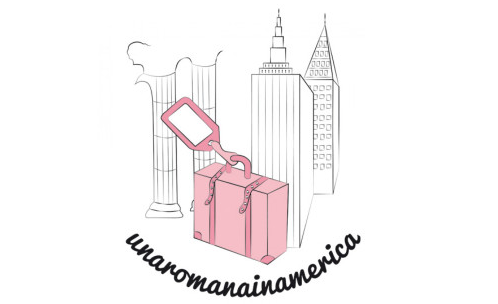
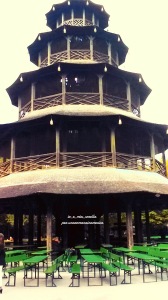
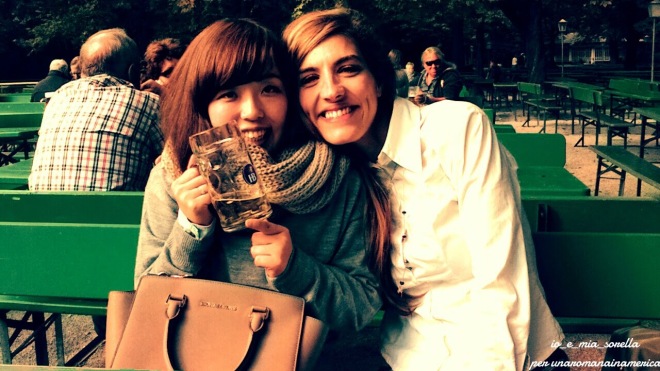

Wooooow che bellissima esperienza!!!
Grazie Stellazzurra
Davvero è stata un’esperienza che mi è piaciuta così tanto!!
Avresti dovuto vedermi.. una bambina! (Ma solo nello spirito 😂😂)
Ti ringrazio di esserci sempre.
Un bacio grande,
Sabrina
😘😘😘